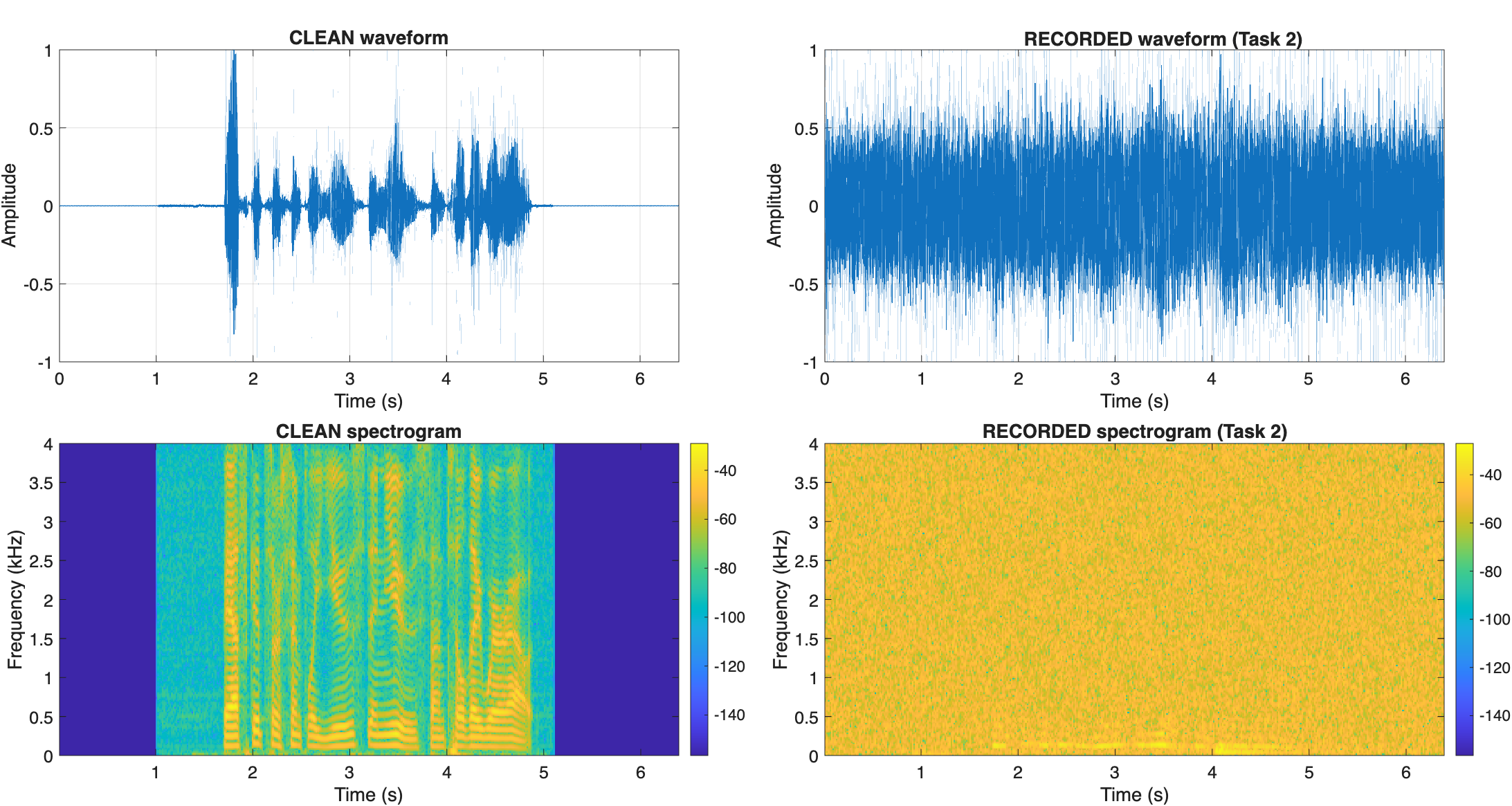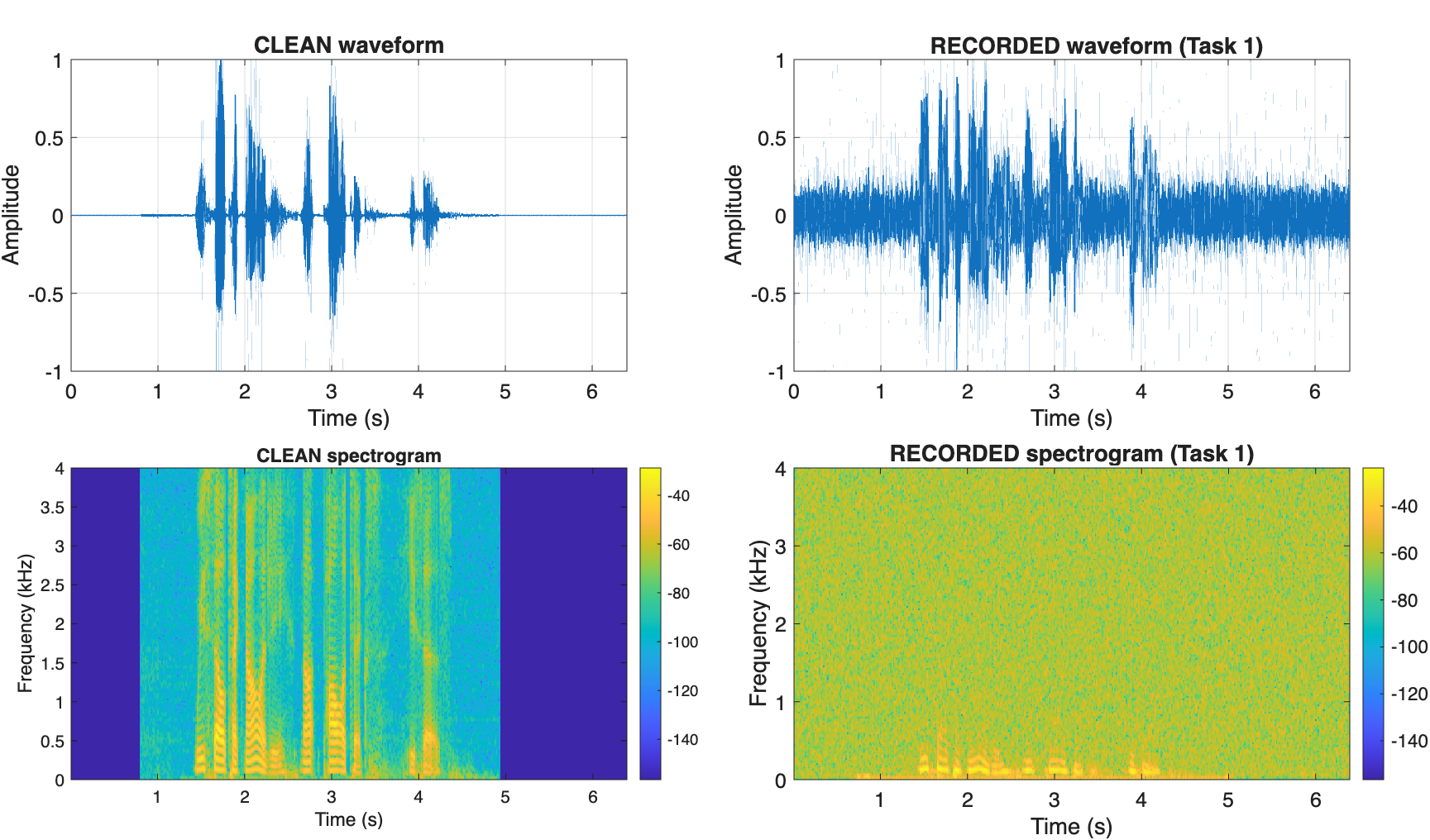Problem Statement
The Radar Acoustic Speech Enhancement (RASE) Challenge 2026 focuses on reconstructing intelligible, full-bandwidth speech from signals captured using mmWave radar. The figures below illustrate the two main data scenarios in this challenge and highlight the difficulty of the task.
Figures 1 and 2 show four panels comparing clean speech (left) with radar-captured speech (right) for two different scenarios.
Figure 1: Direct Diaphragm Vibration (Task 1)
The left plots show the waveform and spectrogram of the clean reference speech played through a loudspeaker. The right plots show the corresponding radar-captured signal obtained by sensing the direct vibration of the loudspeaker diaphragm. While speech content is clearly visible in the clean spectrogram, the radar signal appears noisier and exhibits a limited bandwidth. This represents the simpler case, where the radar has a strong vibrating source.

Figure 2: Secondary Surface Vibration (Task 2)
The left plots again show the clean speech waveform and spectrogram, but here the radar senses vibrations from a thin aluminium foil placed near the loudspeaker. The radar-captured signal (right) is significantly more noisy, and speech components in the spectrogram are almost buried under the noise floor. This represents the more challenging case, where speech must be recovered from very weak, indirect surface vibrations.

Core Challenge
These examples highlight the core difficulty of RASE 2026: transforming noisy, band-limited radar signals into natural-sounding, intelligible speech. Participants are expected to design signal-processing and machine-learning models that enhance radar-captured signals and reconstruct high-quality speech suitable for human listening and downstream speech tasks.